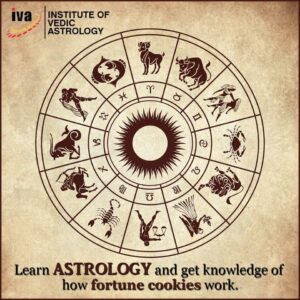Created with AIPRM Prompt “Astrology “
What Is Vedic Astrology?
Vedic astrology, also known as Jyotish Shastra or Jyotisha, is an ancient system of astrology that originated in India over 5,000 years ago. Rooted in the Vedas — the oldest sacred texts of Hinduism — Vedic astrology is not just a predictive science but also a spiritual tool that guides individuals through life’s journey. Unlike Western astrology, which relies heavily on the tropical zodiac, Vedic astrology uses the sidereal zodiac, offering a unique and often more precise perspective on human destiny and cosmic alignment.
This article explores the depth and complexity of Vedic astrology, including its history, foundational concepts, chart systems, predictive techniques, and its relevance in modern life.
Origins and Historical Context
The term “Jyotisha” comes from the Sanskrit word “Jyoti,” meaning light. Thus, Jyotisha is the “science of light” — the light emitted by celestial bodies and their influence on human lives. Vedic astrology is deeply intertwined with Hindu philosophy, yogas, Ayurveda, and spiritual practices, forming a holistic view of life and the cosmos.
The system is described in detail in the Vedanga Jyotisha, which forms a part of the six Vedangas (limbs of the Vedas) and was compiled around 1200 BCE. However, the oral tradition of Jyotisha is believed to be much older, passed down through generations of seers and sages.
Sidereal vs. Tropical Zodiac
One of the primary differences between Vedic and Western astrology lies in the type of zodiac used:
- Tropical Zodiac (Western): Based on the position of the Sun relative to the Earth and fixed to the seasons.
- Sidereal Zodiac (Vedic): Based on the actual observed positions of the constellations in the sky.
The ayanamsa, or the difference between the two zodiacs due to the precession of the equinoxes, creates a shift of about 23–24 degrees. This means that someone with a Sun sign in Aries in Western astrology might have their Sun in Pisces in Vedic astrology.
The Core Components of Vedic Astrology
1. The Twelve Rashis (Zodiac Signs)
Each of the 12 zodiac signs, or Rashis, spans 30 degrees and represents different energies, characteristics, and traits:
- Mesha (Aries) – The Pioneer
- Vrishabha (Taurus) – The Stabilizer
- Mithuna (Gemini) – The Communicator
- Karka (Cancer) – The Nurturer
- Simha (Leo) – The Leader
- Kanya (Virgo) – The Analyst
- Tula (Libra) – The Balancer
- Vrischika (Scorpio) – The Transformer
- Dhanu (Sagittarius) – The Explorer
- Makara (Capricorn) – The Achiever
- Kumbha (Aquarius) – The Innovator
- Meena (Pisces) – The Mystic
2. The Twelve Bhavas (Houses)
The chart is divided into 12 houses, each representing different areas of life:
- Self, body, personality
- Family, wealth, speech
- Siblings, courage, communication
- Home, mother, emotions
- Children, creativity, romance
- Enemies, debts, health
- Marriage, relationships
- Transformation, death, hidden things
- Luck, religion, higher learning
- Career, status, father
- Gains, aspirations, friends
- Spirituality, loss, foreign lands
3. The Nine Grahas (Planets)
The planets (Grahas) in Vedic astrology are not merely physical bodies but divine entities that influence our karmic blueprint:
- Sun (Surya) – Soul, ego
- Moon (Chandra) – Mind, emotions
- Mars (Mangala) – Action, aggression
- Mercury (Budha) – Intellect, communication
- Jupiter (Guru) – Wisdom, expansion
- Venus (Shukra) – Love, luxury
- Saturn (Shani) – Discipline, delay
- Rahu (North Node) – Obsession, illusion
- Ketu (South Node) – Detachment, spirituality
The Natal Chart: Janma Kundali
The Janma Kundali or birth chart is the foundational tool of Vedic astrology. It is a snapshot of the heavens at the exact moment of an individual’s birth, showing the positions of the planets in the 12 signs and houses.
The most commonly used chart styles in Vedic astrology include:
- North Indian Style Chart
- South Indian Style Chart
- East Indian Style Chart
The ascendant sign (Lagna) is the most important point in the chart and acts as the starting house. The planetary positions are interpreted based on their sign, house, and aspects (drishti), forming the basis for predictions.
Nakshatras: The Lunar Mansions
Vedic astrology places immense importance on the 27 Nakshatras or lunar mansions, which are subdivisions of the zodiac. Each Nakshatra spans 13°20’ and has a ruling deity, planet, and specific traits.
For example:
- Ashwini (0° to 13°20’ Aries): Ruled by Ketu, swift, healing, and pioneering
- Rohini (10° to 23°20’ Taurus): Ruled by the Moon, fertile, creative
- Magha (0° to 13°20’ Leo): Ruled by Ketu, royal, ancestral, authoritative
Nakshatras are especially important in Vimshottari Dasha (timing system), muhurta (electional astrology), and marriage compatibility.
Dasha Systems: Predicting Timing
One of Vedic astrology’s most powerful tools is the Dasha system, which divides a person’s life into planetary periods. The most widely used is the Vimshottari Dasha, a 120-year cycle governed by the nine planets.
Each period reveals the type of experiences a person will undergo. For instance, a Shani Mahadasha (Saturn period) may bring challenges, discipline, and transformation, especially if Saturn is weak or afflicted in the chart.
Yogas: Planetary Combinations
Yogas are special planetary combinations that result in specific effects. Some famous Yogas include:
- Raj Yoga – Combination of planets that brings success, authority, and fame
- Dhana Yoga – Brings wealth and prosperity
- Chandra-Mangal Yoga – Affects business acumen and wealth
- Gaja-Kesari Yoga – Jupiter and Moon combination that brings wisdom and intelligence
The presence, strength, and activation of Yogas can make a significant difference in a native’s life trajectory.
Remedies in Vedic Astrology
Vedic astrology doesn’t just diagnose planetary influences — it offers remedial measures to mitigate negative effects and enhance positive ones:
- Mantras: Sacred chants to strengthen weak planets (e.g., “Om Namah Shivaya” for Saturn)
- Yantras: Geometric symbols infused with planetary energies
- Gems: Wearing specific gemstones (e.g., Blue Sapphire for Saturn) based on proper prescription
- Donations: Offering to temples or the needy on specific days
- Fasting: Observing fasts on certain weekdays (e.g., Thursdays for Jupiter)
Remedies are highly personalized and should be prescribed only after a thorough analysis by a qualified astrologer.
Vedic Astrology vs. Western Astrology
| Aspect | Vedic Astrology | Western Astrology |
|---|---|---|
| Zodiac | Sidereal | Tropical |
| Emphasis | Moon & Ascendant | Sun Sign |
| Charts | Janma Kundali | Natal Chart |
| Houses | Equal and whole-sign | Placidus and others |
| Timing | Dasha system | Transits and progressions |
Because of its use of the Moon and the Dasha system, Vedic astrology often provides more nuanced insights into timing and emotional experience.
Vedic Astrology in Modern Times
Today, Vedic astrology is experiencing a resurgence across the globe, with many people turning to this ancient science for guidance in:
- Career decisions
- Relationships and marriage
- Health concerns
- Spiritual path
- Financial planning
Online platforms and advanced software have made it easier than ever to generate and analyze charts, although the interpretive wisdom still lies in the hands of an experienced astrologer.
Final Thoughts
Vedic astrology is a profound system of cosmic knowledge that goes far beyond daily horoscopes. It is a map of your karma, a mirror of your psyche, and a guide toward your dharma — your purpose in life.
By understanding the influences of the planets and the patterns in your birth chart, you can make more informed decisions, navigate life’s challenges more smoothly, and ultimately align more closely with your higher self.
Whether you’re seeking clarity, healing, or deeper self-awareness, Vedic astrology offers a time-tested path to insight and empowerment.
